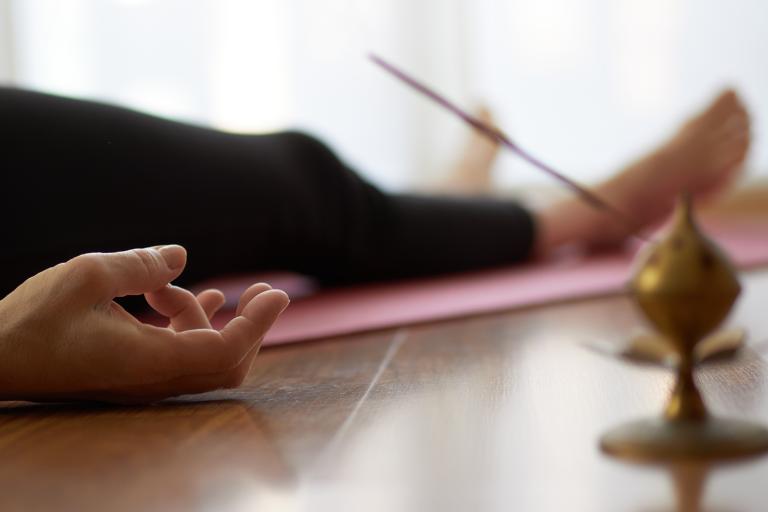It’s hard not to feel relaxed upon hearing the words “yogic sleep.”
Imagine: you’re lying on a yoga mat, deepening your breath, and allowing life’s daily stressors to melt away.
This, in essence, is yoga nidra—a type of “psychic sleep” or “effortless relaxation.”
What is Yoga Nidra?
Yoga nidra refers to the state that exists between waking and sleeping; it’s the place where the body returns to its natural sense of equilibrium.
Practicing Yoga Nidra
Yoga nidra is a practice for everyone and for every age. It is not about holding intense yoga poses for long periods of time. Its aim is not to “fix” things.
Yoga nidra is instead an accessible practice that cultivates well-being through multiple levels. It helps people “let go” and achieve a sense of peace in a relatively short period of time.
Ancient sages knew the power of yoga nidra. They performed this practice to consciously watch and purify their samskaras, or impressions of the mind.
Yoga nidra offers an opportunity for the modern-day participant to release long-held emotions by facing what they wish to overcome.
Where Can I Learn and Practice Yoga Nidra?
Look for local studios that offer yoga nidra. There are apps and YouTube videos to explore as well.
What Happens in a Yoga Nidra Session?
During a yoga nidra session:
- A person lies down in savasana (corpse pose).
- If lying on the floor is not possible, sitting in a chair is another option.
- The participant brings their awareness inward and listens to a set of instructions, similar to a guided meditation. This brings one into a meditative state and a feeling of wholeness.
- One’s senses become withdrawn. This allows for deep relaxation and an expansion into self-awareness.
How Long Does Yoga Nidra Take?
Perhaps most appealing is the fact that one does not need a long stretch of time to perform yoga nidra. Anywhere from five minutes to one hour can help.
How Do I Do Yoga Nidra at Home?
- Practice away from any distractions, preferably in a darker room.
- If needed, sleep masks can be used to block out light.
- Keep a blanket nearby, as the body tends to gets colder when at rest.
- Some prefer to practice yoga nidra before sleep to prepare the body for deep rest.
How Does Yoga Nidra Work?
When one’s body is in a restful state, one can welcome and respond to thoughts, beliefs, and feelings in novel ways.
Uncomfortable memories and traumas can be witnessed, thus lessening their presence. When these samskaras (or impressions on one’s memory) arise, one can allow feelings to surface and be experienced. With subsequent yoga nidra practices, there is a further moving into these feelings accompanied by a witnessing of reactions.
After liberation from the samskara, one’s memories, thoughts, and traumas can be released.
Breath Work in Yoga Nidra
Breath is an important piece of yoga nidra.
Working with the breath allows the participant to enter an alpha state. This stimulates hormones in the pineal gland, which releases melatonin—a hormone that helps boost the immune system and reduce stress.
The body’s senses are then used to explore, listen, and welcome every part of the body and breath, leading one into a deeply relaxed state.
Benefits of Yoga Nidra
Many positive outcomes arise from practicing yoga nidra. Some have likened the benefits of a yoga nidra session to that of a multi-hour nap.
-
Improve Physical and Mental Health
- Lowering pain
- Reducing depression
- Boosting concentration
- Lessening fatigue
- Reducing insomnia
- Alleviating anxiety
- Improving self-esteem
-
Manage Chronic Disease
- Cancer
- Colitis
- Bronchial asthma
- Peptic ulcer
- Menstrual irregularities

